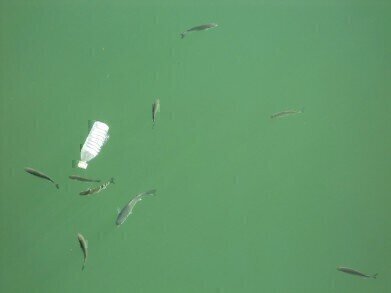Water/Wastewater
Can the Cora Ball Help Prevent Micro-Pollution?
May 10 2017
As a species, we are doing irreparable damage to the oceans and waterways of the world – most of the time without even noticing it. In addition to the millions of tonnes of plastic which find their way into oceans through improper disposal methods, there’s also another huge problem: micro-pollution.
Microfibers are tiny pieces of plastic and other material which are so small they can evade the filtration systems of even of the most sophisticated wastewater treatment plants. Prevalent in clothing items such as fleeces, these particles can become ingested by plankton, fish and other sea-dwelling animals, eventually finding their way up the food chain and onto our plates.
However, an innovative start-up company from Vermont in the States has engineered an ingenious product to nip microfibers in the bud before they can reach the treatment plant in the first place.
Science imitating nature
The Cora Ball is a small, plastic device capable of catching microfibers during your wash. Inspired by the swaying motion of coral reefs, which naturally capture millions of tiny floating particles all of the time, the Cora Ball’s layered structure is the perfect net to trap microfibers, including plastic particles and hair, before the washing process is complete.
The device can be manufactured using a 3D printer and is made from 100% recycled plastic, as well as being 100% recyclable itself. This means that not only can it be used for multiple washes (consumers simply have to manually remove the clumps of fibre and discard them before reuse), but that it can be safely disposed of in any plastic recycling facility after its life has come to an end.
The ball was developed by Vermont-based company The Rozalia Project, who funded the initiative via a Kickstarter campaign. Donors were asked to pledge a minimum of $20, in return for which they would receive a Cora Ball prototype in June 2017.
Thinking outside the ball
Of course, scientists are constantly investigating new ways to clean up flooded lakes, reservoirs and oceans, but the best approach would be to prevent such contamination from happening in the first place. The developers of the Cora Ball claim that using one in a standard washing load can remove up to 35% of the microfibers released.
While that doesn’t sound like an impressively high percentage, the Rozalia Project state that if 10% of US households used their product in every wash, that would save the equivalent of 30 million plastic water bottles from entering streams, rivers and oceans every year. That’s quite a hefty figure.
The original design of the Cora Ball was achieved through the use of a 3D printer, which allows for its unique and intricate design but is not cost-effective on a commercial scale. In order to meet the anticipated demand for this innovative and potentially environment-saving product, the Rozalia Project are looking at more traditional moulding methods. It’s too late to invest in the company itself – but it’s not too late to buy your very own Cora Ball. The future of the world’s waterways could very well depend on it.
Events
Apr 22 2024 Hannover, Germany
Apr 23 2024 Kuala Lumpur, Malaysia
Apr 24 2024 Sao Paulo, Brasil
May 05 2024 Seville, Spain
May 13 2024 Munich, Germany













